Table of Contents
Remembering Joe Henderson (born on this day in 1937).
Come join us now, and enjoy playing your beloved music and browse through great scores of every level and styles!
Can’t find the songbook you’re looking for? Please, email us at: sheetmusiclibrarypdf@gmail.com We’d like to help you!
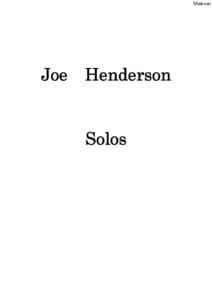
Best Sheet Music download from our Library.
Joe Henderson: The Quintessential Jazz Saxophonist
Introduction
Joe Henderson (1937–2001) was one of the most influential tenor saxophonists in jazz history. Known for his distinctive tone, harmonic sophistication, and relentless creativity, Henderson left an indelible mark on the genre. Over his four-decade career, he played with nearly every major jazz musician of his time, from Miles Davis to Herbie Hancock, while also leading his own groundbreaking groups. His music blended hard bop, post-bop, modal jazz, and avant-garde influences, making him a versatile and innovative artist.
This article explores Henderson’s life, musical style, influences, legacy, major works, filmography, and discography, along with links to some of his most famous compositions.
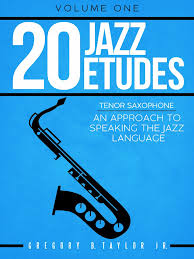
Please, subscribe to our Library.
If you are already a subscriber, please, check our NEW SCORES’ page every month for new sheet music. THANK YOU!
Biography
Early Life and Education (1937–1960)
Joseph Armand Henderson was born on April 24, 1937, in Lima, Ohio. He grew up in a large family and was the second youngest of fifteen children. His early exposure to music came from his parents and older brothers, who played records by jazz greats like Lester Young, Stan Getz, and Charlie Parker.
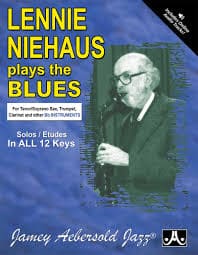
Henderson began playing the saxophone at age nine, initially drawn to the alto before switching to tenor in high school. He studied music at Kentucky State College and later transferred to Wayne State University in Detroit, where he immersed himself in the city’s thriving jazz scene.
Early Career and Blue Note Records (1960–1967)
After serving in the U.S. Army (1960–1962), Henderson moved to New York City, where he quickly became a sought-after side man. His recording debut came in 1963 with Page One, his first album as a leader for Blue Note Records. The album featured the now-classic composition “Recorda-Me” (Remember Me), which became a jazz standard.
Throughout the 1960s, Henderson recorded a series of acclaimed albums for Blue Note, including:
- Our Thing (1963)
- In ’n Out (1964)
- Inner Urge (1966)
- Mode for Joe (1966)
He also played as a sideman on landmark albums such as:
- Horace Silver’s Song for My Father (1964)
- Andrew Hill’s Point of Departure (1964)
- Lee Morgan’s The Sidewinder (1963)
Milestone Records and Later Career (1967–2001)
By the late 1960s, Henderson’s style evolved as he incorporated elements of fusion and avant-garde jazz. He briefly joined Miles Davis’s band in 1967 but left before recording with him.
In the 1970s, he signed with Milestone Records and released a series of adventurous albums, including:
- Power to the People (1969)
- In Pursuit of Blackness (1971)
- Multiple (1973)
After a period of relative obscurity in the 1980s, Joe Henderson experienced a major resurgence in the 1990s. He signed with Verve Records and released a trilogy of tribute albums:
- Lush Life: The Music of Billy Strayhorn (1992) – won a Grammy for Best Jazz Instrumental Performance
- So Near, So Far (Musings for Miles) (1993) – won a Grammy
- Double Rainbow: The Music of Antonio Carlos Jobim (1995)
Henderson continued performing until his death from heart failure on June 30, 2001, in San Francisco.
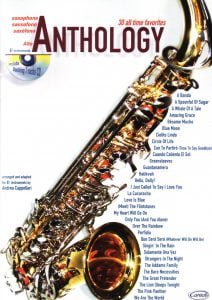
Musical Style and Influences
Style
Henderson’s playing was characterized by:
- A unique tone – Warm yet edgy, with a slightly sharp, vocal-like quality.
- Harmonic sophistication – He employed advanced chord substitutions and chromaticism.
- Rhythmic flexibility – His phrasing was unpredictable, often playing behind or ahead of the beat.
- Eclectic influences – He blended bebop, modal jazz, free jazz, and Latin rhythms.
Influences
Henderson cited several key influences:
- Lester Young – For his smooth, lyrical approach.
- Sonny Rollins – For his thematic improvisation.
- John Coltrane – For harmonic exploration.
- Charlie Parker – For bebop phrasing.
- Ornette Coleman – For avant-garde ideas.
Legacy
Joe Henderson’s impact on jazz is immense:
- Compositions – Tunes like “Recorda-Me,” “Inner Urge,” and “Isotope” are now jazz standards.
- Influence on saxophonists – Players like Chris Potter, Mark Turner, and Joshua Redman cite him as a major inspiration.
- Grammy recognition – His late-career resurgence proved his enduring relevance.
- Educational impact – His improvisational concepts are studied in jazz pedagogy worldwide.
Major Works
Notable Albums as a Leader
| Album | Year | Label |
|---|---|---|
| Page One | 1963 | Blue Note |
| In ’n Out | 1964 | Blue Note |
| Inner Urge | 1966 | Blue Note |
| Mode for Joe | 1966 | Blue Note |
| Power to the People | 1969 | Milestone |
| Lush Life | 1992 | Verve |
| So Near, So Far | 1993 | Verve |
Notable Side man Appearances
- Horace Silver – Song for My Father (1964)
- Herbie Hancock – The Prisoner (1969)
- McCoy Tyner – The Real McCoy (1967)
- Freddie Hubbard – Red Clay (1970)
Filmography
Though primarily a musician, Henderson appeared in a few jazz documentaries:
- A Great Day in Harlem (1994) – Documentary about the famous 1958 jazz photo.
- Jazz Icons: Joe Henderson Live in ’64 (2007) – Concert footage.
Discography (Selective)
Blue Note Era (1963–1967)
- Page One (1963)
- Our Thing (1963)
- In ’n Out (1964)
- Inner Urge (1966)
- Mode for Joe (1966)
Milestone Era (1967–1985)
- Power to the People (1969)
- In Pursuit of Blackness (1971)
- Multiple (1973)
Verve Era (1990s)
- Lush Life (1992)
- So Near, So Far (1993)
- Double Rainbow (1995)
Essential Joe Henderson Compositions (With Video Links)
- “Recorda-Me” – From Page One (1963)
- “Inner Urge” – Title track from Inner Urge (1966)
- “Isotope” – From Inner Urge (1966)
- “Black Narcissus” – From Power to the People (1969)
- “The Bead Game” – From In Pursuit of Blackness (1971)
Joe Henderson was a master saxophonist whose contributions to jazz remain vital. His ability to blend tradition with innovation made him one of the most respected musicians of his generation. From his early Blue Note classics to his Grammy-winning tributes, Henderson’s music continues to inspire new generations of jazz artists.
Whether through his compositions, recordings, or live performances, Joe Henderson’s legacy as a jazz giant is secure. His music remains essential listening for anyone seeking to understand the evolution of modern jazz.
Further Reading & Listening
- Joe Henderson: The Definitive Biography by Richard Palmer
- Joe Henderson’s official website (archived)
- Jazz Discography Project
This article provides a comprehensive overview of Henderson’s life and work, but the best way to appreciate his genius is to listen to his recordings—where his soulful, inventive spirit truly comes alive.
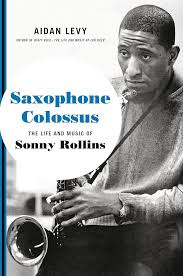
Browse in the Library:
Or browse in the categories menus & download the Library Catalog PDF:
Joe Henderson’s Double Rainbow: The Music of Antonio Carlos Jobim – A Masterful Tribute to Bossa Nova
Introduction
In 1995, Joe Henderson released Double Rainbow: The Music of Antonio Carlos Jobim, the third installment in his acclaimed tribute album series for Verve Records. Following Lush Life: The Music of Billy Strayhorn (1992) and So Near, So Far (Musings for Miles) (1993), this album showcased Henderson’s deep appreciation for Brazilian jazz and the compositions of Antonio Carlos Jobim, the father of bossa nova.
Henderson’s Double Rainbow is not merely a covers album—it is a reimagining of Jobim’s music through the lens of a master jazz improviser. With lush arrangements, a stellar ensemble, and Henderson’s signature tenor sound, the album stands as one of the finest jazz interpretations of Brazilian music.
Background and Recording
Why Jobim?
By the 1990s, Joe Henderson had already proven himself as a versatile saxophonist capable of excelling in hard bop, post-bop, and avant-garde settings. However, his decision to record a full album of Jobim’s music was both surprising and inspired.
Jobim’s compositions—such as “The Girl from Ipanema,” “Desafinado,” and “Corcovado”—had already become jazz standards, but Henderson approached them with fresh harmonic and rhythmic complexity. Unlike Stan Getz’s cool, breezy interpretations in the 1960s, Henderson infused these tunes with his muscular, exploratory style.
The Recording Sessions
- Produced by Richard Seidel
- Recorded at The Power Station, New York (1994)
- Arrangements by Oscar Castro-Neves (a longtime Jobim collaborator)
The album featured an exceptional lineup:
- Joe Henderson – tenor saxophone
- Herbie Hancock – piano
- Christian McBride – bass
- Jack DeJohnette – drums
- Oscar Castro-Neves – guitar
- Eliane Elias – piano (on “Felicidade”)
- Paulinho Braga – percussion
Musical Style and Highlights
Henderson’s Approach to Jobim’s Music
Rather than sticking to traditional bossa nova phrasing, Henderson treated Jobim’s melodies as springboards for extended improvisations. His playing on Double Rainbow is:
- Lyrical yet adventurous – He respects the original melodies but expands them with his signature chromaticism.
- Rhythmically sophisticated – While keeping the Brazilian groove, he plays with syncopation and offbeat accents.
- Harmonically rich – He explores altered scales and substitutions, adding depth to Jobim’s already complex harmonies.
Standout Tracks
- “Felicidade”
- A samba-infused opener featuring Eliane Elias on piano.
- Henderson’s solo is both playful and deeply expressive.
- “Once I Loved (O Amor em Paz)”
- A ballad rendition with lush orchestration.
- Henderson’s tone is warm and breathy, reminiscent of a vocalist.
- “Triste”
- A mid-tempo bossa with a hypnotic groove.
- Herbie Hancock’s piano comping is sublime.
- “Zingaro” (Retrato em Branco e Preto)
- One of Jobim’s most melancholic compositions.
- Henderson’s interpretation is hauntingly beautiful.
- “Double Rainbow”
- The title track, an original by Jobim, receives a sweeping, cinematic treatment.
Reception and Legacy
Critical Acclaim
- Grammy Nomination – Best Jazz Instrumental Performance, Individual or Group (1996).
- JazzTimes called it “a masterclass in melodic improvisation.”
- AllMusic praised Henderson’s “ability to reinvent Jobim’s music without losing its essence.”
Though it didn’t win a Grammy (unlike his previous two tribute albums), Double Rainbow solidified Henderson’s reputation as a master interpreter of other composers’ works.
Influence on Brazilian Jazz
Henderson’s album helped reintroduce Jobim’s music to a new generation of jazz musicians. It also demonstrated how Brazilian jazz could be fused with modern post-bop sensibilities. Later artists, such as:
- Brad Mehldau (in his “Elegiac Cycle”)
- Diana Krall (in her bossa nova recordings)
acknowledged the influence of Henderson’s approach.
Where to Listen
- Streaming: Available on Spotify, Apple Music, and YouTube Music.
- Vinyl/CD: Reissued by Verve in 2016 as part of their “Originals” series.
Recommended Video Links
Double Rainbow: The Music of Antonio Carlos Jobim is a testament to Joe Henderson’s genius as both an improviser and an interpreter. By infusing Jobim’s bossa nova classics with his own bold, exploratory style, Henderson created an album that is both respectful and revolutionary.
For fans of jazz and Brazilian music alike, Double Rainbow remains an essential listen—a bridge between two great musical traditions, masterfully woven together by one of the greatest saxophonists in jazz history.
